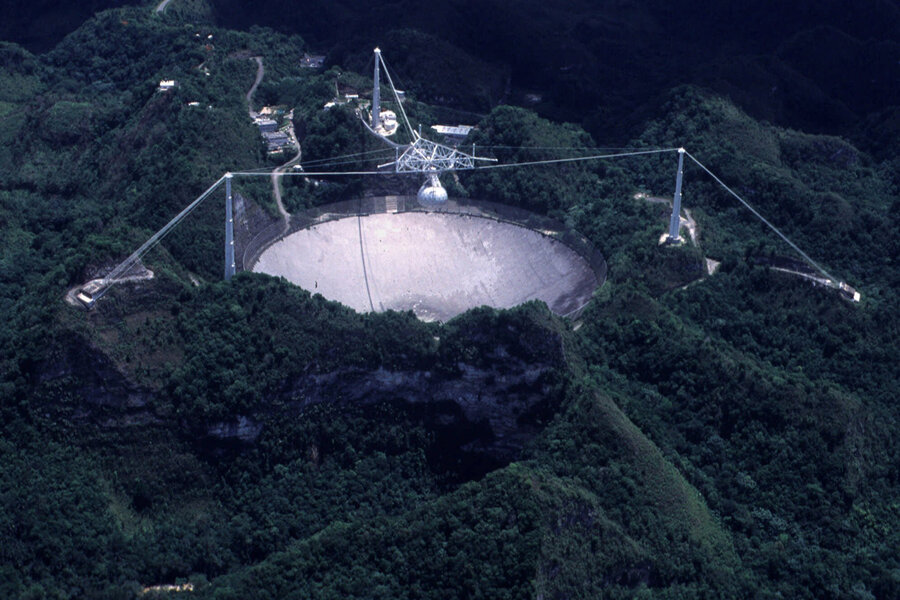Mystery of cosmic radio bursts grows even more intriguing
Loading...
Like the pulse of a flashing light, a recently observed series of cosmic radio bursts defy their predecessors, which have been bright, singular blasts.
Fast radio bursts, or FRBs, are a relatively new discovery. Since the first one was reported eight years ago, only 17 have been documented since. All of them have been isolated radio pulses that have occurred just a few milliseconds each – that is, until now. Perusing data collected by the hypersensitive Arecibo telescope in Puerto Rico, a team of astronomers have spotted and analyzed a succession of 11 repeated bursts, all from the same position in the sky.
“This research shows for the first time that there can be multiple FRBs from the same place in the sky – with the same pulse dispersion or distance,” Cornell senior researcher Shami Chatterjee, one of the co-authors of the study published in Nature Thursday, said in a statement.
The discovery not only adds variance to the archive of FRBs but also challenges scientists' understanding of their origins. One popular theory hypothesizes that the bursts are the product of explosive collisions between two neutron stars. But such explanation could not possibly apply to the strobe of echoing bursts.
“Whatever produces the FRB can’t be destroyed by the [neutron explosion], because otherwise, what would produce the next pulse?” Dr. Chatterjee explained.
Just last week, a separate study was able to trace the 17th FRB to a precise location 6 billion light years away. Researchers speculate that it could be attributed to the colliding neutron star theory.
But this most recent series of flashes, according to lead author Jason Hessels, associate scientist at the Netherlands Institute for Radio Astronomy, must derive from events that preserve their sources to burst again, like the recalibration of a magnetar’s magnetic field. A magnetar is the dense core created by the explosion of a star in a supernova.
It’s estimated that more than 10,000 FRBs throb against the sky everyday. But they are incredibly difficult to trace in real time. Of the 18 reported FRBs, most have been discovered by the Parkes telescope in Australia.
"It's possible that so far we've only seen the brightest FRB bursts," Dr. Hessels told Space.com in an e-mail. "Because of Arecibo's much higher sensitivity, we can see much weaker pulses, and hence the chances of detecting repeats is higher."
His team is now working to trace the exact location of where the repeated flashes originated.








